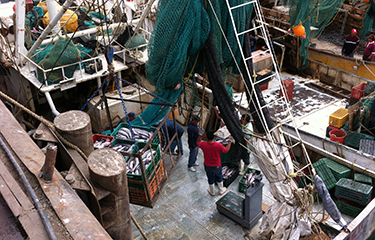Much of the whitefish in Mexican markets is tilapia or seabass that comes from fish farms or far-away countries, often without sustainability certifications or traceability standards, according to the Environmental Defense Fund (EDF).
An emerging hake fishery in the Gulf of California could start to change that.
A new fishery improvement project (FIP) organized by Mexican producers seeks to develop a local market for Gulf of California hake, while ensuring the fishery's long-term profitability and sustainability. Currently, around 60 percent of Gulf of California hake is exported to the United States and Europe.
"We want more people to know that the fishing industry in Mexico can help with food security while protecting the ocean and its fishing resources," Claudia Higuera, a hake producer and member of the group that organized the FIP, said in a statement. "We hope that, with consumers' support, we can get more people aware of their seafood choices and promote fisheries that enhance a healthy and full-of-life ocean, while improving the livelihood of people who depend on responsible fishing."
Recent research suggests that improved fishery management in Mexico could also help the industry weather the impacts of climate change, with the gains from fishery reforms more than making up for the losses expected from climate change. EDF is working on fishery management in Mexico, and is backing the new Gulf of California hake FIP.
More than 2,400 people in the Mexican states of Sinaloa, Sonora, and Baja California have jobs related to the fishery, the season for which runs from January to May, and the fishery is among the most important in the region. Local producers partnered with seafood traders, researchers, NGOs, and Mexican fishery managers to create the FIP, which was first presented last month at the Contramar Restaurant in Mexico City.
The FIP will increase transparency and accountability for the fishery, with standards for stock health, ecosystem impacts, and fishery governance. Information on the FIP will be available at at FisheryProgress.com.
The Gulf of California hake fishery is quite young: It was first recognized as a distinct fishery in 2018, when it was registered in the National Fisheries Register by Mexico's National Institute of Fisheries and Aquaculture.
The organizers are seeking to position the hake fishery as a sustainable role model for other industrial fisheries. The organizers say that timing for a FIP is good, too, since the stock is in a healthy condition and is not currently overfished and market opportunities abound, both in Mexico and abroad.
Photo courtesy of the Environmental Defense Fund







